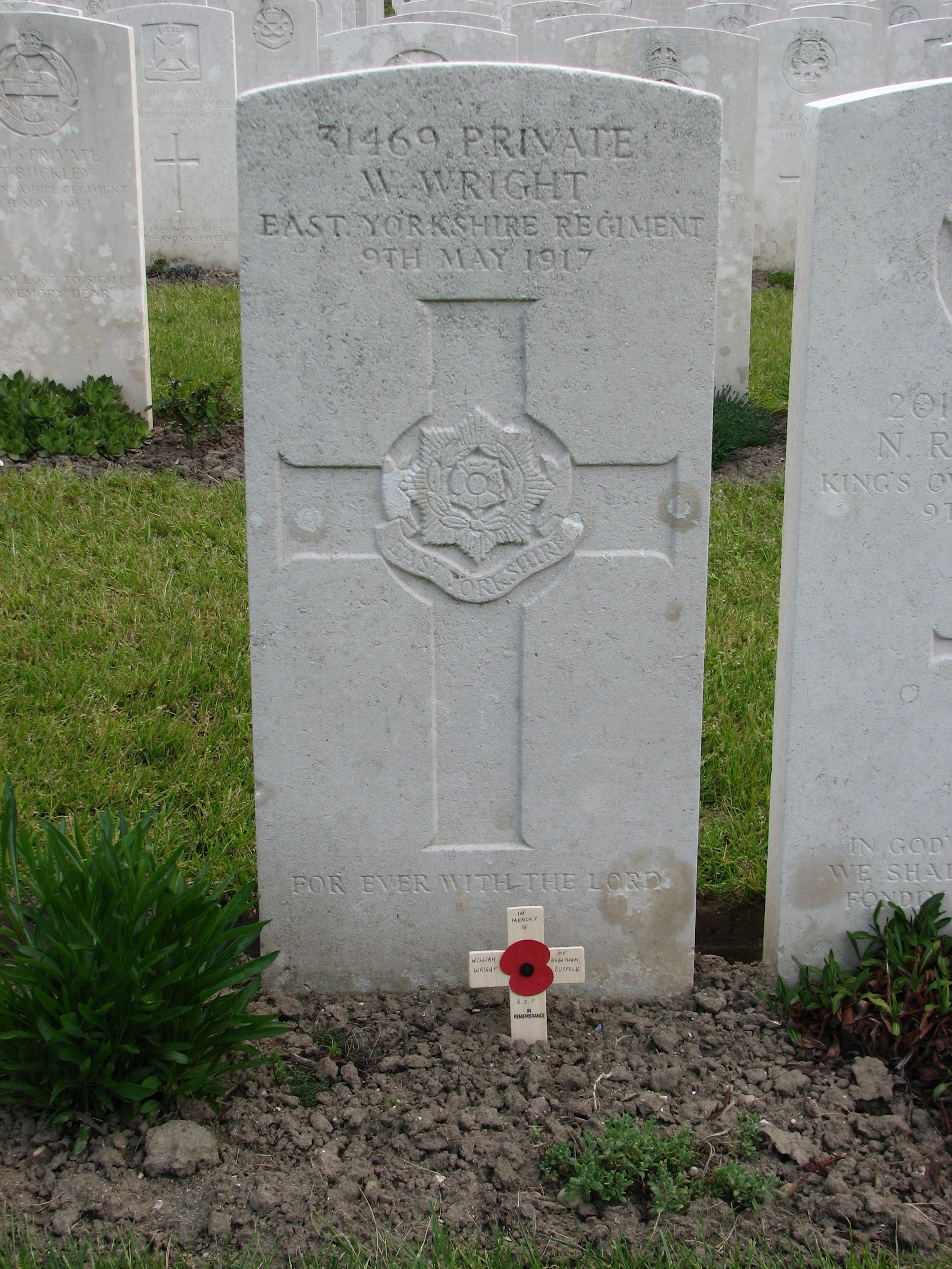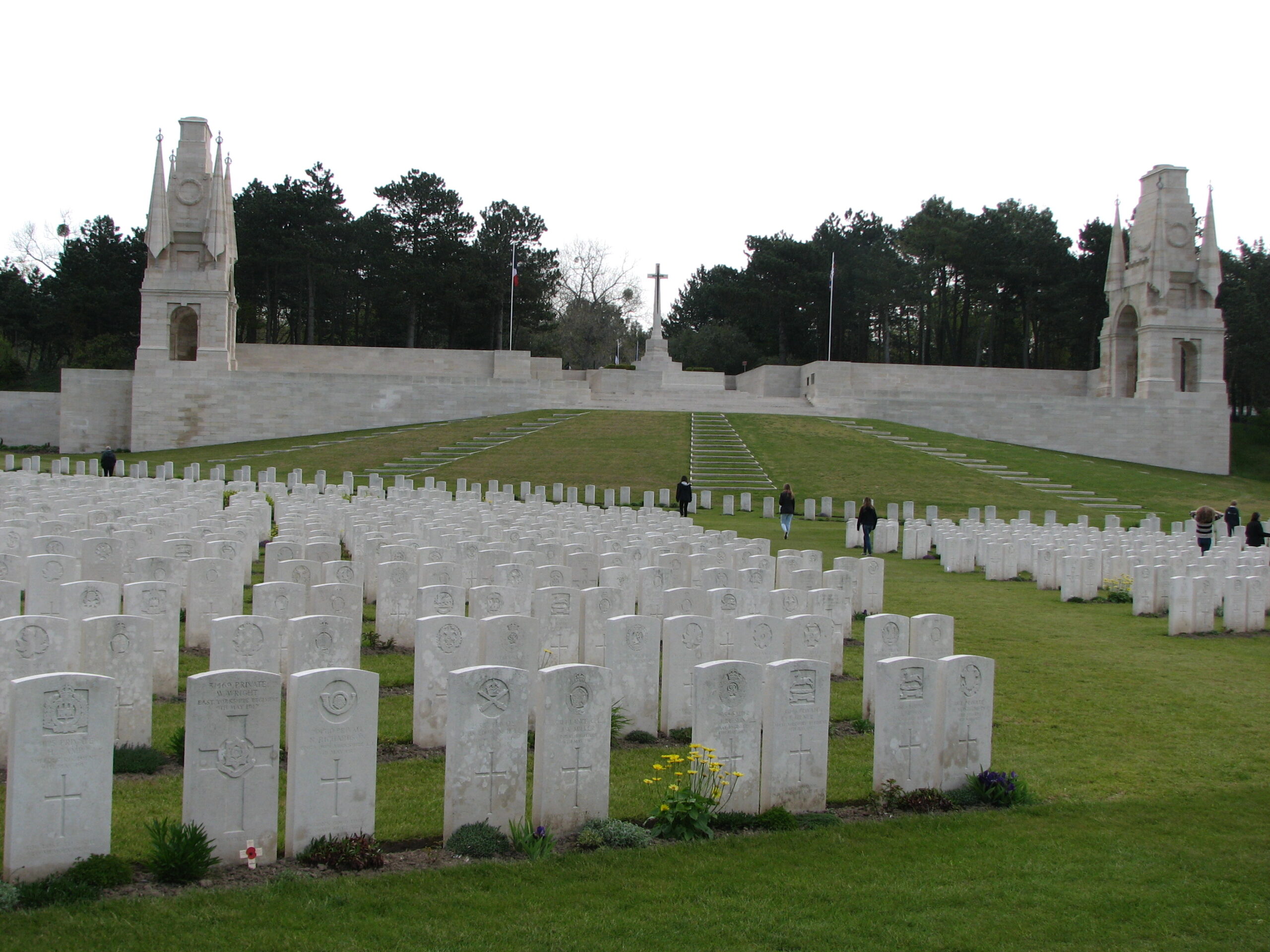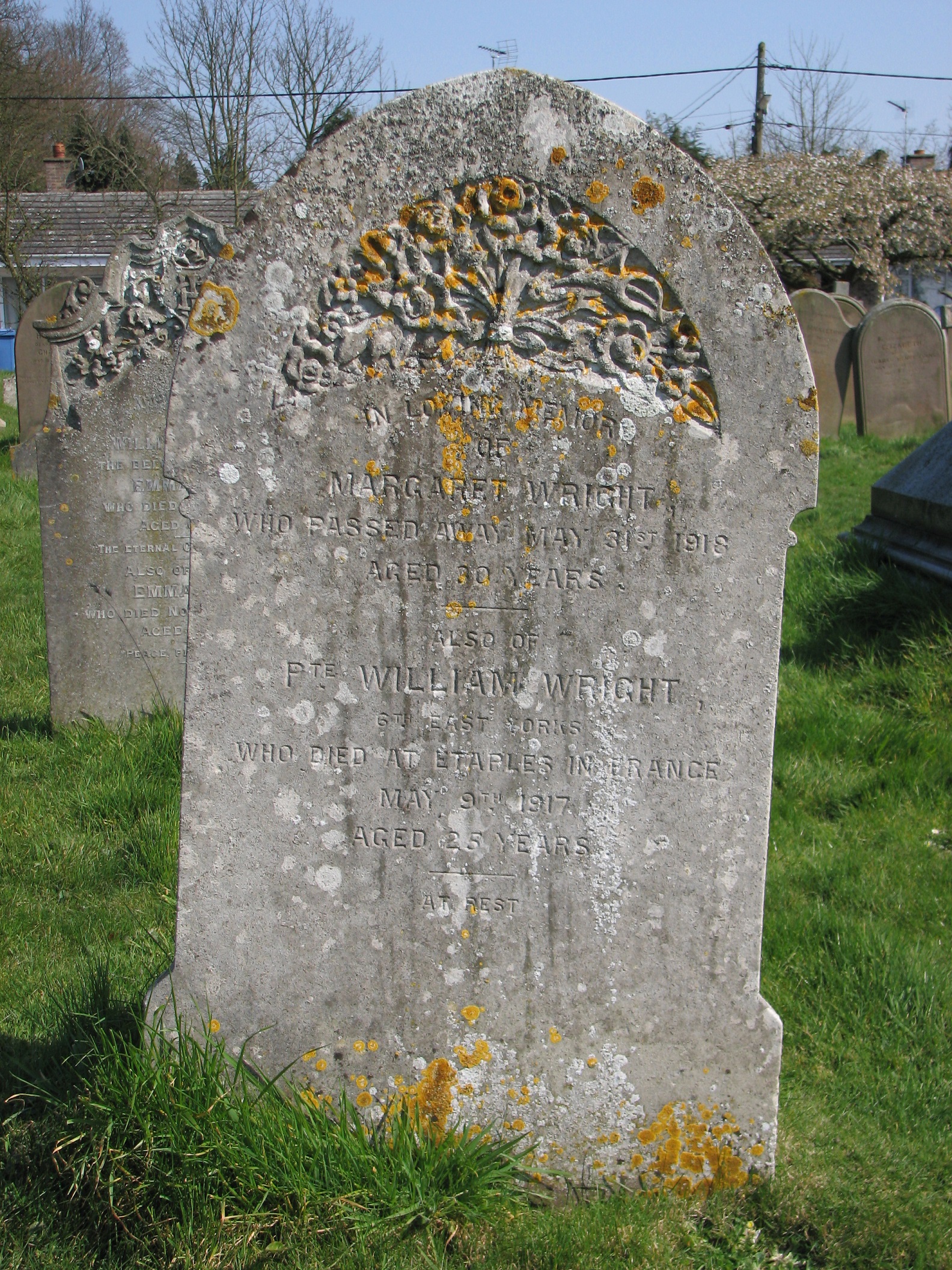William Wright (1891 - 1917)
William is the only man to be commemorated on both the Brantham and the East Bergholt War Memorials to those who Died. He served with the East Yorkshire Regiment on the Western Front and was wounded during the Battle of the Somme.
- 71
- Died in the Great War
- 51.976449, 1.034966
Details
| Name: | William Wright |
| Service: | British Army |
| Unit: | 6th Battalion, East Yorkshire Regiment |
| Regimental Number: | 31469 |
| Rank: | Private |
| Date of Death: | 9th May 1917 |
| Age: | 25 |
| Buried: | Plot XIX, Row R, Grave 9, Etaples Military Cemetery, Etaples, France |
Despite the fact that a number of men who died in the Great War had lived in both East Bergholt and Brantham at various points in their lives, William Wright is the only one who is commemorated on the War Memorials of both of those villages. 1 Unfortunately, we no longer know the full details of what criteria had to be met in each village, in order to have the deceased serviceman’s name included on the War Memorial. It is possible that some of it may just have just come down to a request on the part of the men’s families and some strong local connection.
Family Background and Early Life
William Wright was born in East Bergholt on 1 September 1891, quite probably at his parents’ residence in Slough Cottages at East End.
William’s father Walter, was a Farm Labourer, and an East Bergholt man born and bred. Walter had married Elizabeth Layzell from Brantham in 1879, and together they had at least 9 children. Elizabeth died in March 1895, when William was just 3 years old, so it is likely that he was brought up in large part by one or more of his older sisters.
Along with two of his elder sisters, William started at East Bergholt village school at Burnt Oak in October 1898, having previously begun his education at Bentley. By that time the family were living on Spring Lane, or Norton’s Lane as it was also known.
Like most other boys at the start of the twentieth century, William left school at the age of 13. The area then was primarily still one with an agricultural economy, and William found employment as a Horseman on one of the local farms.
At some point between April 1911 and May of 1918, Walter and those of his children who still lived with him had moved to Warren Cottage in Brantham. Whether this move took place before William joined the Army is not known.
Joins the Army
William seems to have volunteered for service in the British Army under the Group Scheme in November or December 1915. 2 The Group Scheme was often called “the Derby Scheme”, after the then Director-General of Recruiting, Lord Derby. This was effectively a last ditch attempt by the government to increase recruitment by voluntary means, before they had to resort to conscription. As permitted under the terms of the Scheme, William formally enlisted in the Army Reserve, but chose to go back to his civilian job until he was required.
Called up by the Army at the start of February 1916, William was posted to the Suffolk Regiment. After completing his basic training, he was sent to France – almost certainly on 29th June 1916. At that stage of the War, most British troops arriving in France then spent a short spell at an Infantry Base Depot, before being posted to their units “in the field”. William was transferred to the 1st Battalion of the East Yorkshire Regiment and joined them as part of a reinforcement draft on or around 13th July.
The Battle of the Somme
The 1st East Yorks had suffered heavy losses at the start of the month on the first day of the Battle of the Somme. In the middle of July, the Battalion were again thrown into the Battle, taking part in fighting around the village of Bazentin Le-Petit.
The Battalion left the Somme in late July, moving north where they spent August taking their turn in manning the trenches near the town of Arras.
By mid-September, William and the 1st East Yorks had returned to the Somme where they were involved in heavy fighting before the village of Gueudecourt. The 1st suffered heavy casualties, and at some point in this fighting – most likely on or around the 25th of the month – William was wounded.
Depending on the severity of his wound, William may have been evacuated back to the UK. Unfortunately, it is very difficult to establish what happened to William in the months after this, because his Service Papers were destroyed by German bombing in the Second World War. However, we do know that he was subsequently posted to the East Yorkshire Regiment’s 6th Battalion, most likely when he returned to active duty after recovering from his wounds.
The Pioneers
The 6th East Yorks was the Pioneer Battalion of the 11th (Northern) Division. The Pioneer Battalions were all armed as infantry soldiers but were intended to support the Royal Engineers in a variety of tasks. 3 Each division had a Pioneer Battalion. “Intended to provide the Royal Engineers, with skilled labour and to relieve the infantry from some of its non-combatant duties, Pioneers became the work horses of the Expeditionary Forces. Several New Army battalions were raised specifically as Pioneers, while others were converted Territorials or Kitchener units formed originally as conventional infantry. Adopting a badge of a cross rifle and pick, these battalions wired, dug and reverted [sic] in all weathers and in all terrain. On many occasions they abandoned their working tools and fought alongside the infantry in repelling enemy attacks.” – extract from “Pioneer Battalions in the Great War” by K.W. Mitchison, Pen and Sword 2014. In their duties the Pioneers often went close to or even into the front line trenches – it was not easy work, and casualties were not uncommon.
For many of the men who served in the Great War, the rigours of active service often in cold, wet and unsanitary conditions made them more susceptible to disease and illness. This was perhaps especially the case for those whose constitutions may have weakened by having been wounded.
William died of pneumonia at Number 24 General Hospital at Etaples on the Channel coast, on 9th May 1917. 4 Etaples, located south of Boulogne on the Channel coast, was a major depot and training camp for the British Expeditionary Force. It was also the location of 15 military hospitals which could deal with up to 22,000 sick or wounded..
William was buried in the Etaples Military Cemetery, which now contains over 11,000 graves, the vast majority dating from the Great War.
Postscript
Walter Wright died in 1922 at the age of 70. He is buried with William’s Mother in East Bergholt Cemetery.
Copyright © Mark Ashmore, 2024
- 71
- Died in the Great War
- 51.976449, 1.034966




